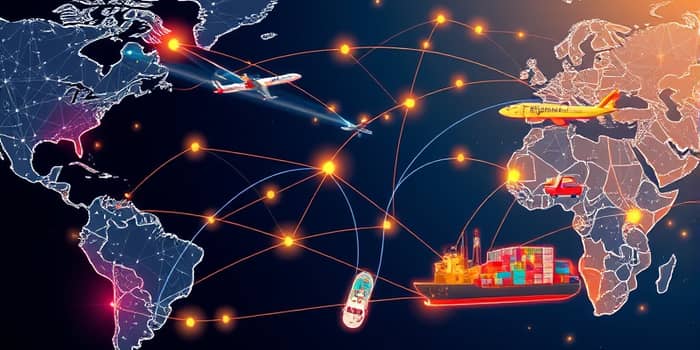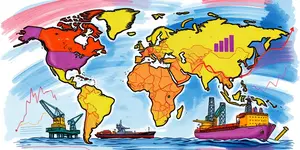
In today’s volatile landscape, supply chains are no longer mere logistical operations—they are critical assets that determine a company’s ability to thrive. As global disruptions intensify, businesses must embrace new mindsets and tools to stay ahead.
Supply chain resilience has surged in strategic importance. Recent insights reveal that 83% of executives now rank supply chain resilience on par with their cybersecurity initiatives. This represents a seismic shift, driven by a significant rise in customer expectations for faster delivery and unwavering quality standards.
Executives cite inflation, regulatory changes, and tariffs as pressing concerns over the next two years, with 75% saying geopolitical issues dominate their risk assessments. The clear message: supply chains must be robust, adaptable, and continuously monitored.
Persistent inflationary pressure is squeezing margins across industries, and fewer than 8% of businesses feel they have full control over supply chain risks. As a result, 63% of companies report higher-than-expected losses attributed to ongoing unpredictability.
Moreover, the nature of top risks has evolved. Pandemic concerns have waned from 23% in 2023 to just 13% in 2025, while geopolitical and economic uncertainty now loom larger than ever. Companies are preparing for trade conflicts, shifting regulations, and energy scarcity.
Cyber threats are a growing peril. Over 55% of organizations cite cybersecurity as a primary concern for their supply chains. In response, nearly half are exploring AI-powered tools to predict disruptions, automate decision-making, and boost transparency.
Adoption of digital supply network mapping has accelerated, offering real-time visibility into supplier ecosystems. This allows teams to identify potential bottlenecks before they escalate, and to reroute shipments and resources with unprecedented agility.
Building a resilient supply chain requires a multifaceted approach. Companies are leaning into:
These strategies move organizations away from reactive firefighting toward proactive risk management.
Environmental factors remain critical, even as their perceived urgency shifts. Businesses are now balancing efficiency with resilience, preparing for natural disasters, extreme weather, and energy scarcity.
Many firms have integrated climate risk into their supply chain models, conducting scenario planning for floods, droughts, and severe storms to ensure continuity of operations and protect reputations.
The blueprint for tomorrow’s resilient supply chains includes cross-functional collaboration and integration among suppliers, logistics partners, technology vendors, and customers. By working in concert, organizations can leverage the “Constellation of Value” approach—an interconnected ecosystem designed to balance cost and resilience.
These elements form the foundation for supply chains that adapt and evolve as conditions change.
Leading companies have already demonstrated the power of technology and collaboration. For instance, TaylorMade employs integrated software platforms for planning and inventory visibility, enabling rapid adaptation to demand spikes during peak seasons. By combining AI forecasting with flexible distribution models, they have reduced stockouts by 40% and improved on-time delivery rates by 25%.
In an era defined by volatility, companies that view supply chains as strategic assets will lead the way. By prioritizing resilience alongside efficiency, investing in technology, and fostering deep collaboration, organizations can transform challenges into opportunities.
The future-ready supply chain is not a distant ideal—it is a tangible reality for those willing to innovate and adapt. Embrace these strategies today to build stronger, more agile operations that can withstand whatever tomorrow brings.
References













